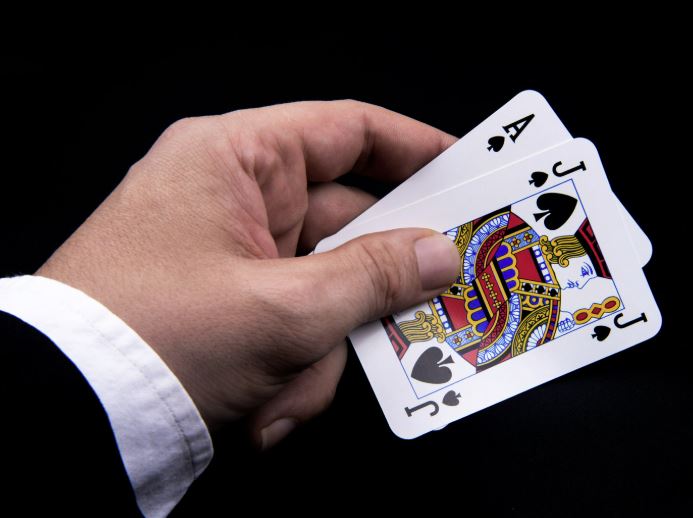
Blackjack is one of the most popular casino card games, but the difference between two common types of hands often causes confusion. Getting a handle on this distinction can clear up much of the uncertainty that happens at the table.
This article introduces these hand types, shows how to spot them, and explores how they influence what you might choose to do during play. You’ll also find examples, pitfalls to watch out for, and reasons why knowing about them is important.
Read on to learn more.
What Is Hard and Soft in Blackjack?
In blackjack, there’s a particular card that can change how a hand is counted, and this difference creates two broad types of hands.
One kind happens when that card is counted in the way that keeps the total number relatively steady. The other kind occurs when counting it differently can make the total more flexible without going over the allowed maximum.
For example, a combination like 10 and 7 is firmly in one group. But if that special card is involved, the hand might belong to the other category, depending on how it’s counted.
This distinction affects choices during the game, especially when deciding whether to take more cards or not.
How to Tell the Difference Between Hard and Soft Hands
The quickest way to figure out which type a hand is involves looking at the special card’s role in the total.
If counting the card one way keeps the total low enough, the hand falls into the more flexible category. For instance, a special card plus a 5 adds up in this way. But if counting it the other way would push the total over the limit, then the hand is in the less flexible group.
After every new card is added, it helps to check again, since the hand might switch categories depending on the new total. Noticing this change is important to avoid mistakes later on.
How to Play Hard Hands in Blackjack
Hands that don’t have the flexibility from the special card usually require a more cautious approach. The aim is generally to improve the total without going beyond the allowed number, while considering the dealer’s  visible card.
visible card.
When totals are very low, it often makes sense to take another card, as the number is far from the limit. As totals rise into the middle range, choices become more delicate. Sometimes, if the dealer shows a weaker card, holding the total steady might be the better move. If the dealer’s card looks stronger, trying to improve the total by drawing again might be worth considering.
When the total gets high enough, it’s common to hold and not take more cards, because the chance of pushing the total too high grows.
Keep in mind that these approaches can shift based on specific house rules, like what the dealer does in certain situations or restrictions on doubling down. It’s always good to know the rules before deciding what to do.
How to Play Soft Hands in Blackjack
The hands that include the special card counted in the flexible way allow for bolder choices, since the hand can adjust if a new card is added.
At the lower end of this category, taking another card usually has little downside. If the dealer shows a weaker card, some players might choose to try doubling their bet, aiming for a strong total quickly.
In the middle of this range, the flexibility really stands out. When the dealer shows a low card, doubling down can be tempting. If the dealer’s card looks stronger, hitting again without immediately committing too much is often the chosen path. A hand like this might be played actively in certain cases where standing could leave the player at a disadvantage.
When the totals get near the upper limit, they are generally strong enough to stand. Occasionally, doubling down might still be attempted in special situations if rules allow it, but standing remains the usual choice. The key is to take advantage of the flexibility offered by the special card to press an edge when the dealer’s visible card is weak, and to secure the total when it’s strong.
As before, specific house rules can make a difference, affecting the best decision.
Why Do Hard and Soft Hands Matter?
Knowing how to distinguish these two kinds of hands helps change guesswork into more thoughtful choices. Instead of simply looking at the total number, it’s useful to understand how the special card is counted and how that influences what might happen next.
Hands with this special card counted flexibly allow for more opportunities to improve without the total becoming too high. Hands without that option generally call for more informed decisions since every additional card could push the total beyond the limit.
This difference also guides how a player might respond to the dealer’s visible card. For instance, if the dealer shows a lower card, it might encourage cautious moves with one type of hand and more assertive ones with the other. When the dealer’s card is higher, efforts usually focus on improving the hand because weak totals are less likely to win.
Common Mistakes Players Make with Hard and Soft Hands
One frequent slip is treating both types of hands the same way, even though they behave quite differently. For example, a hand with the flexible special card might comfortably take another card, while a similar total without that flexibility usually should not.
Another mistake is forgetting that a hand with this flexible card can lose that flexibility after receiving another card. For example, a certain combination may start as flexible, but if a particular card arrives, it changes into the less flexible type. Continuing to play it as if it still had the flexibility can lead to poor choices.
Standing too soon on flexible totals is also common. A total that seems complete might still benefit from taking another card in some situations, especially if the dealer’s visible card is strong. On the flip side, repeatedly taking cards with less flexible hands against strong dealer cards, without considering the chance of pushing the total too high, can also be costly.
Finally, players sometimes overlook the house rules that can affect decisions, such as how the dealer plays certain hands, how many decks are in use, or restrictions on doubling. Taking a moment to check the rules at the table before starting helps keep these in mind.
Setting affordable limits, taking breaks, and stepping away if the situation becomes overwhelming can make the whole experience easier to handle. Having a clear understanding of these two types of hands makes decisions steadier, helps spot errors, and can simplify the game overall.
**The information provided in this blog is intended for educational purposes and should not be construed as betting advice or a guarantee of success. Always gamble responsibly.
